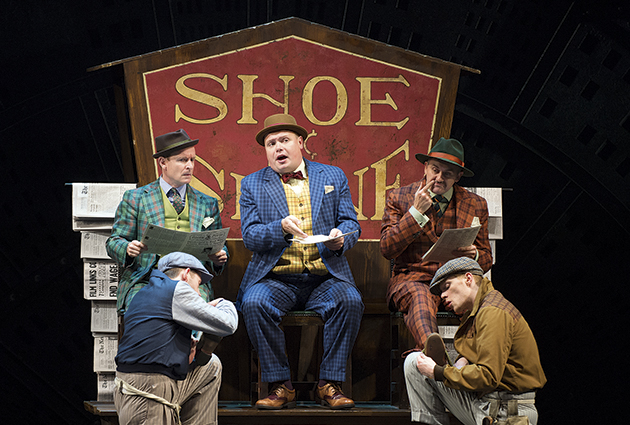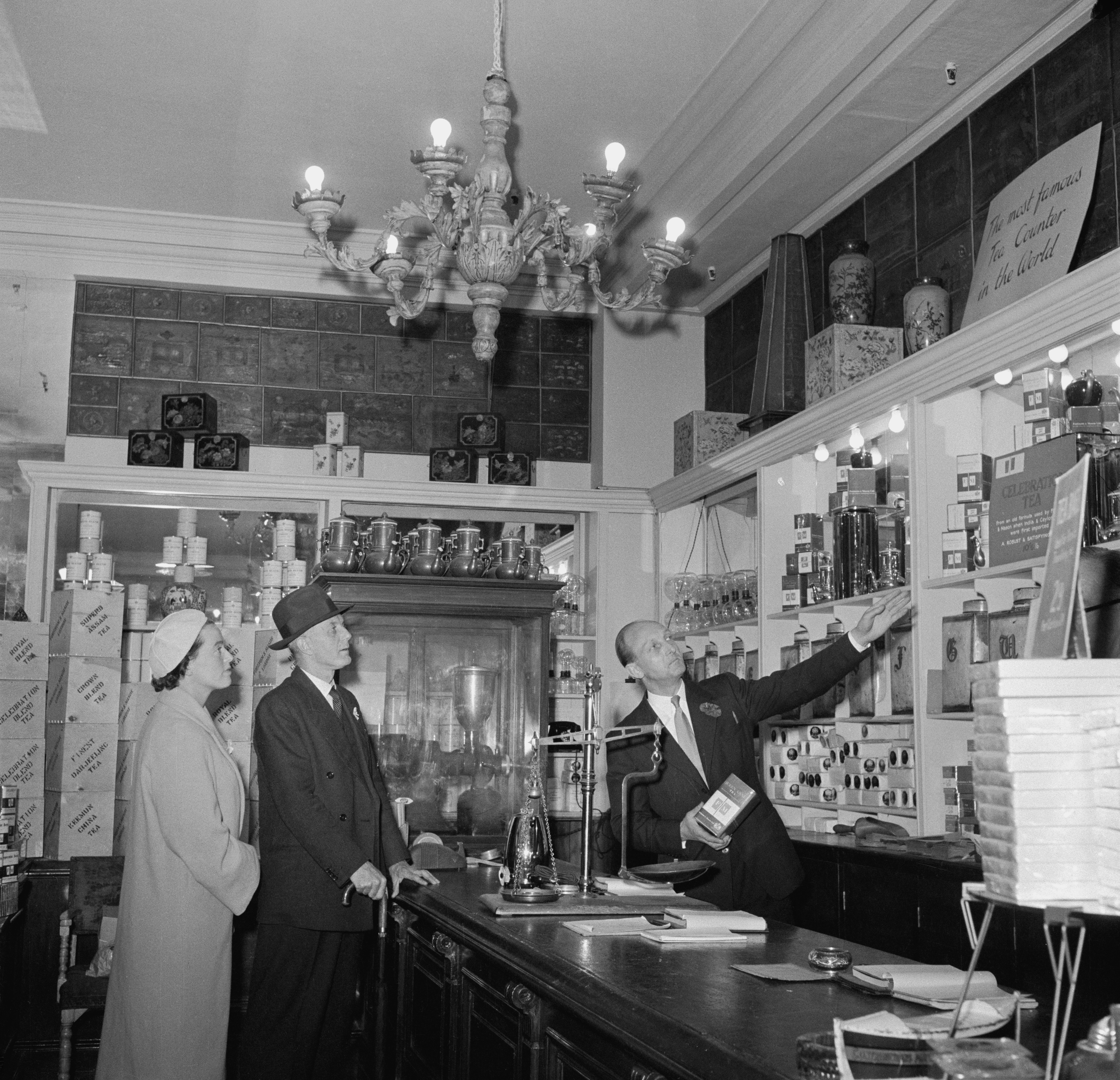What makes a great musical?
Country Life gets to grips with what makes a good musical


What makes a great musical? Most of us would say that the secret lies in memorable tunes that create an infectious sense of happiness. However, although no one would dispute the power of hummable songs, I suspect the test of a musical’s durability lies in its libretto, commonly known as ‘the book’. My conviction was reinforced recently by seeing Guys and Dolls at the Savoy Theatre and Grey Gardens at Southwark Playhouse on successive nights.
Americans were quick to see that Guys and Dolls was a classic of the genre. After its first staging on Broadway in 1950, John Chapman selected it for his anthology of the year’s best plays on the grounds that its cohesiveness and brilliance made it better than any of the season’s straight dramas.
In Britain, we were a little slower to accept the point. When Laurence Olivier proposed a revival by the National Theatre company in 1970, with himself playing Nathan Detroit, his board took a bit of persuading that the work really was a classic. It was only when Richard Eyre triumphantly staged it at the National in 1982 that it was universally accepted as one of the great works of American theatre.
Seeing it again in Gordon Greenberg’s revival, which has arrived at the Savoy from the Chichester Festival Theatre, I was struck by how much the show owes to the book by Jo Swerling and Abe Burrows. They had, of course, the fabled stories of Damon Runyon, which give a verbal swagger to the low-lifers of Times Square, on which to draw. But there is a sublime wit to the plotting.
Sky Masterson, the hardened gambler who bets he can take a ‘mission doll’ to Havana, turns out to be as chivalric as any figure from The Romance of The Rose. And Nathan Detroit, the grubby fixer who constantly dodges marriage to his long-term fiancée, Miss Adelaide, winds up a model of domestic stability. Even the hoods and crap-shooters who haunt the city streets turn out to have a revivalist streak as shown in the great number Sit Down, You’re Rockin’ the Boat.
This is not to diminish the importance of Frank Loesser’s music and lyrics or the choreo-graphy, here in the assured hands of Carlos Acosta and Andrew Wright, but the songs and dance routines derive from character and share the pervasive wit of the book.
The show’s funniest figure is Miss Adelaide, a stripper whose protracted engagement produces psychosomatic symptoms as she sings: ‘Just from waiting around for that plain little band of gold/A person can develop a cold.’ Following in the notable footsteps of Julia McKenzie and Imelda Staunton in the National Theatre production, Sophie Thompson not only invests the character with humour, but also pathos as she realises her crow’s feet are ever more deeply etched with each passing year.
Sign up for the Country Life Newsletter
Exquisite houses, the beauty of Nature, and how to get the most from your life, straight to your inbox.
As I watched this glorious revival, in which Jamie Parker is outstanding as a Bible-quoting Sky slowly waking up to his own feelings, it also hit me that the 1950s was a golden age for the American musical. Guys and Dolls in 1950 was followed by My Fair Lady in 1956, West Side Story in 1957 and Gypsy in 1959.
And what they all have in common is books that are not just clotheslines on which to hang a succession of tunes, but literate stories that prompt song. I’ve long argued that West Side Story in some ways even improves on Romeo and Juliet by explaining just why the crucial message that triggers the final tragedy fails to get through.
Of course, there have been great musicals since then, such as Sondheim’s Sweeney Todd, but if the 1950s produced a litany of classics, it’s because it was a decade that knew the value of a good book. I don’t want to rub the point in, but Grey Gardens, which arrived at Southwark Play-house after success in New York in 2006, confirms my thesis.
It has a lot going for it, such as a lively score by Scott Frankel, densely packed lyrics by Michael Korie and first-rate performances by Jenna Russell and Sheila Hancock. However, if it doesn’t hang together as a show, it’s due to Doug Wright’s book being made up of two distinct halves that end up contradicting each other.
The show’s starting point was a cult documentary made in 1975 by the Maysles brothers, which charts the sad seclusion of a mother and daughter: Edith Bouvier Beale and ‘Little’ Edie, who were, respectively, aunt and cousin to Jackie Kennedy and who ended up living in squalor in a 28-room Long Island mansion overrun by cats.
It’s a strange story and it comprises the second half of the show, in which the two women are seen living together in a state of mutual, if occasionally rancorous, dependence. However, in order to fill out the evening, Mr Wright has written a first half, set more than 30 years earlier, in which he seeks to explain the origins of the women’s plight. The result, not without its pleasures, is like a pastiche of High Society, showing the American upper classes at play. But it’s hard not to see the older Edith, a frustrated songstress, as a bit of a monster who deliberately sabotages Little Edie’s engagement to a member of the Kennedy clan.
In short, the moral neutrality of the second half, in which the two women are viewed as equally pitiable victims, is undermined by the bias of the first half in which a mother wrecks her daughter’s life.
I admit the show went down well on the first night. That, however, was because, as Wordsworth said after seeing a Gothic thriller by Monk Lewis staged in Bristol, ‘it fitted the taste of the audience like a glove’.
I too took pleasure in the performances. Jenna Russell, who has been hovering for a long time on the brink of stardom, is astonishing in the second half when, wearing the oddest get-up, she sings of The Revolutionary Costume For Today. And Sheila Hancock, as her mother, invests everything she does with a silvery grace. It all goes to show that, in the end, a musical is only as good as its book.
Country Life is unlike any other magazine: the only glossy weekly on the newsstand and the only magazine that has been guest-edited by HRH The King not once, but twice. It is a celebration of modern rural life and all its diverse joys and pleasures — that was first published in Queen Victoria's Diamond Jubilee year. Our eclectic mixture of witty and informative content — from the most up-to-date property news and commentary and a coveted glimpse inside some of the UK's best houses and gardens, to gardening, the arts and interior design, written by experts in their field — still cannot be found in print or online, anywhere else.
-
 Bye bye hamper, hello hot sauce: Fortnum & Mason return to their roots with a new collection of ingredients and cookware
Bye bye hamper, hello hot sauce: Fortnum & Mason return to their roots with a new collection of ingredients and cookwareWith products sourced from around the world, the department store's new ingredients and cookware collection is making something of a splash.
-
 Sheep-herding dogs, The Archers and Sir David Attenborough: Country Life Quiz of the Day, May 8, 2025
Sheep-herding dogs, The Archers and Sir David Attenborough: Country Life Quiz of the Day, May 8, 2025Thursday's Quiz of the Day features dogs, David (Attenborough) and radio drama.